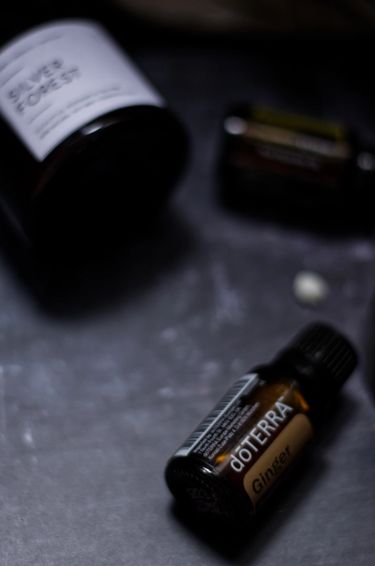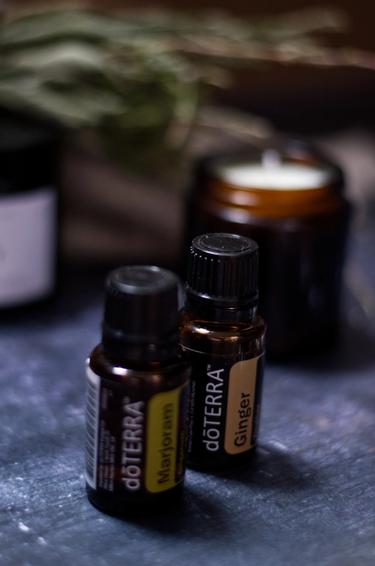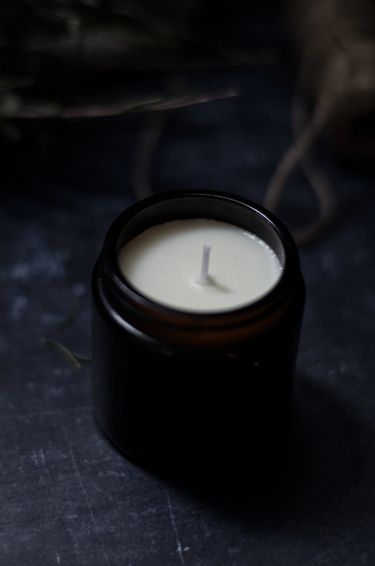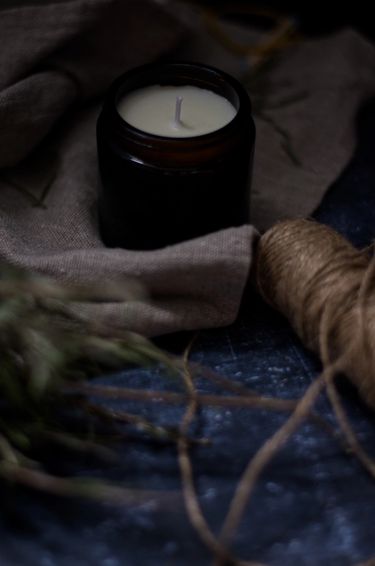If you enjoy this article, or any other content from this website, please subscribe to the newsletter. Your support can make a big difference!
Is it mother's day already!
Having lived in multiple locations, I always find it hard to remember dates, as many countries have their own mother's day. Why?!!
Anywho, with COVID still causing stress to shoot through the roof, I've decided to focus this post on the importance of wellness.
We all struggle. We all suffer from some mental ailment and that is no crime. There should be no stigma. And each one of us needs to learn how to deal with what ticks us — whether it's taking a bath, listening to a podcast, or simply getting creative.
I'm easily distracted but don't I LOVE getting creative, whether it's a sketch, my photography, and my cooking. I've always VERY much loved DIY since I was a little -my cousin and I would 'sell' handmade bookmarks opposite my dad's bar when we were only 7 (during the daytime, don't worry!). Another OBSESSION I always had was with candles. I'm CRAZY about candles — especially the good ones made of natural wax and natural scents. Give me a candle of that sort and I will mark you down as my forever friend. It only took, er... a pandemic to FINALLY nudge me to make my very own. And I'm nice enough to tell you how. Kidding!
But first, let's get the elephant out of the room first, shall we?
How much does it cost to start making candles?
Candle making may appear to be a costly affair and it can be, especially when using essential oils over fragrance oils (more on that below.). But it is afforable, I promise.
You'll first need to buy your equipment which can vary in price (see my spending below). The raw ingredients are what adds the most cost and by that, I mean the essential oils. You can find box sets online which are very affordable but do your due diligence and check that they are pure essential oils. You can read about that more here.
Supply list for making soy candles with essential oils
Making candles is not as hard as it appears. First, you'll need some basic equipment. I got mine partly via Amazon and partly via an amazing zero waste store close to my home in Turin, Italy.
The equipment I use is the following:
- A basic candy thermometer. I bought mine for under €10
- Weighing scales. I had these at home.
- A larhe pot for boiling water. I used what I had.
- A silicone spatula (you can use a wooden dowel but as wood is porous you may lose some of the oils). I also had a spatula at home.
- A pouring pot. Bought a 1.2litre pot for €17.
- Wicks, wick stickers, and a wick holder (You can use pencils to hold the wick in place). I bought a pack of 100 wicks, which came with stickers and a wick holder for under €10 but I plan on using more sustainable wicks made of unwaxed cotton (as usually they are dipped in paraffin wax), hemp, or wood.
- Glass jars. You can upcycle any glass jar that doesn't have a very narrow mouth.
On top of the equipment, you will need your materials: wax and oils. As I don't like using paraffin wax (an oil derivative shown to release toxic carcinogens into the air when burned) or artificial scents as they are chemical. Instead, I use pure natural wax (I bought 2kg of soy wax for €15 but you can also use beeswax or coconut wax) and essential oils (you can buy individual bottles of spefici brands or box sets like Anjou's that cost under €20).

Making Candles with Essential Oils
To really compare the benefits of essential oils, it is important to first understand the difference between fragrance oil and essential oil in candles.
Fragrance Oil vs Essential Oil in Candles
Essential oils are concentrated liquids derived from organic plant matter, and as such, they contain the strongest scents of that particular plant. For this reason, the oils are referred to as "essential" in that the oils reflect the essence of a particular plant, root, or flower. (source)
Fragrance oils are highly concentrated synthetic or natural aroma compounds that have been mixed with a near scentless carrier oil. These aroma compounds are lightweight which allow them to reach your scent receptors as they breakdown (source)
Essential oils for candles are definitely my preference when the question of wellness is concerned.

Benefits of Using Essential Oils
Fragrance oils are manufactured specifically for the purpose of delivering a strong scent that makes an impact and is cheaper to use as it's not made by extracting the oil of plants. Less is more, resulting in a heavily scented candle that is what makes this option attractive.
But all in all, aromatherapy and wellness are associated with essential oils for candle making that bring great benefits to the mind and body. Essential oils can be used in diffusers or as air purification and it's no different with candles. I tend to use my candles when I am doing yoga, meditating or reading before bedtime.
Best Essential Oils for Candles
In this 'recipe', I use doTERRA's gorgeous Ginger and Marjoram essential oils which I've also used in my recipes here and here.

Yes, these can be added to food in the most minuscule quantities. Always and I mean ALWAYS consult the brand of essential oils that you are using as not all essential oils are pure or food grade. I cover that in my blog post here.
But the key thing when using essential oils in candles is that they are pure and don't produce toxins when burnt. The quality of these essential oils should be high and always check the burning point of each essential oil you use. Lavender may burn at a lower temperature than Sweet Orange for instance. Don't forget to get creative with the way you use oils and blend them. Understand the health benefits of each oil and the sensation they bring to the mind and body: for instance, mint and eucalyptus are invigorating and healing whilst cinnamon and orange bring festive scents.
How to Make Candles with Essential Oil
These homemade soy candles with essential oils are a safe, healthy, and all-natural alternative to store-bought candles. And they make a great homemade gift for Christmas or any other occasion!
1. Prepare your jars.
If repurposing old jars, make sure they’re clean and dry. Centre and glue wicks to the inside bottom of jars using wick stickers (or a glue gun if you have one handy). Place wick holders (or chopsticks) across the tops of jars to keep wicks upright and centred.
2. Measure out your wax.
I recommend weighing wax with a digital kitchen scale. To make one jar with dimensions 6cm (W) x 6.5cm (H), and a capacity of 120ml, weigh 100g of soy wax in your pouring pot (remember to tare it — meaning means hit the “tare” or “weight reset” button with your empty pot on the scale so that the scale doesn’t count the weight of the pot itself)
3. Melt wax in pouring pot or double boiler on the stove.
Never heat up a pouring pot directly on the stovetop. Always fill another pot with about an inch or two of water and place the pouring pot in the pot. Melt wax on high until the wax has completely liquified. Use a kitchen thermometer to check the temperature of the wax. For best results, allow it to reach 82ºC and then take it off the heat.
4. Allow the wax to cool to roughly 55ºC.
Allow the wax to cool to about 50-55ºC before pouring in the essential oils. This is because if you add the oils when the wax is too hot, you will burn the scent off and waste those precious (expensive) scent molecules. You’ll want to add about 35 drops of essential oils per 100ml. It is a lot because essential oils have a delicate scent (compared to fragrance oils) but don't be discouraged. The trick is to find get the best scent throw (by getting the temperatures right). You can do this by optimising the scents that you mix together if you are adding more than one type of oil. You will also need to mix the essential oils for a good 2 minutes to allow the molecules to bond to the oil. Do NOT skip this part.
5. Pour the wax slowly into prepared jars.
Pour into the jars and leave them untouched overnight. The next day, trim the wicks to the desired length, and if you want to get fancy, put custom labels on your jars.

Selling your Candles (or Gifting Them)
Soy and vegan candles have a very high demand in the candle market. Unlike regular oil paraffin, soy candles are made from wax extracted from soybeans. Also, soy candles usually burn longer and cleanly. Therefore, the best quality soy candles are usually sold for a higher price than regular candles. So, if you are thinking of making candles at home to sell online, it is worth giving it a try.
The easiest way to start selling candles is on popular online marketplaces. For example, you can use eBay, Amazon, or Etsy to sell homemade candles. These platforms don’t charge you for listing.
Otherwise, if you're gifting your homemade candles, I recommend going the extra mile by adding a label that 'certifies' and educates the recipient of the ingredients and their benefits. Remember to do a burn test

TIP: Remember to tell them to use the candle in a small room, and to allow the candle to burn for an hour so that the wax pool (i.e. the surface of melted wax) is uniform. The more surface area from which to evaporate some molecules, the better.
